The most dangerous creatures in Utah fall into four groups. These are large mammals, venomous reptiles, dangerous arachnids such as scorpions and venomous spiders, and dangerous insects. We’ll talk about all of these in the paragraphs below.
Dangerous Large Mammals in Utah
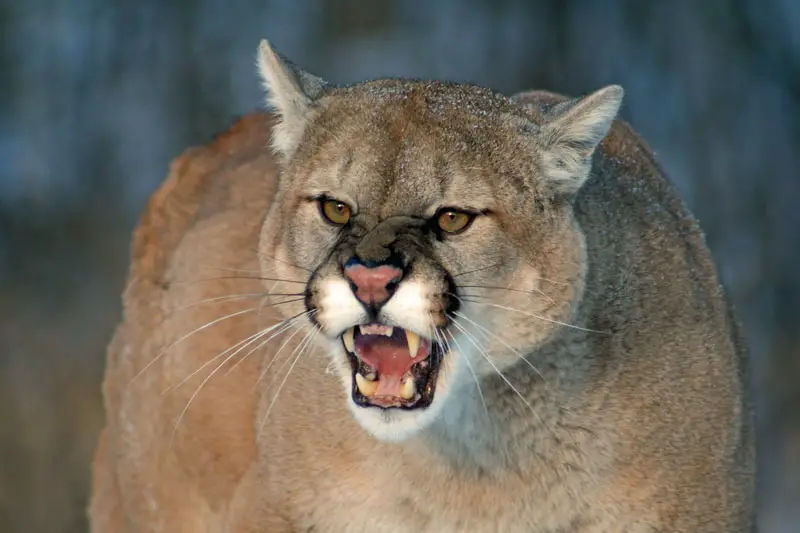
Mountain lions
Due to the fact that they live over a wide geographical area, mountain lions have a long list of regional names. In recent years, their scientific name was even changed from Felis concolor to Puma concolor. Some common names that mountain lions go by are cougar, panther painter, Andean Mountain lion, and puma.
Where are mountain lions typically found?
Mountain lions live on all three of the American continents. Their range begins in Canada’s Yukon territory and extends south through parts of North America, Central America, and South America to the southern tip of Argentina.
In Canada, the biggest populations of them are in British Columbia and Alberta. On the other hand, in the continental United States, they mainly live in the western states and Florida in the southeast. In Florida, the cougar is called the Florida panther.
The state of Utah is home to around 2700 mountain lions. See According to the Utah Division of Wildlife Resources website, mountain lions live throughout the state, particularly in foothill and canyon areas. They also follow their main food source, which is mule deer, down into the valleys in the wintertime.
Look for them in the following:
- pinon pine
- juniper
- mountain mahogany
- ponderosa pine
- oak brush
- subalpine meadows
You’ll notice that all of these habitat types are good for deer. This is no coincidence. Deer are the mountain lion’s main source of prey. In fact, Mountain lions account for around 18 pounds of biomass and consume around 10 pounds of meat per day. To do this, an adult mountain lion has to kill a deer, “A mule Deer in Utah”, or a deer’s equivalent in meat around once a week. In Utah, they also prey on elk, moose, Rocky Mountain bighorn sheep, desert bighorn sheep, Rocky Mountain goats, pronghorns, feral horses, coyotes, raccoons, birds, rats, feral pigs, javelina, porcupines, skunks, snakes, small pets, domestic livestock, and literally any other native wildlife they can catch. See
Do mountain lions ever harm humans?
I’ve taken much of the following section from another one of my blog posts entitled “Are Mountain Lions Dangerous?” Found here.
Fatal mountain lion attacks on humans are extremely rare. In fact, there are only 20 records of fatal mountain lion attacks on humans in all of North America in the last 100 years. Don’t let that fact lull you into a complete sense of false security, though. There have been many more mountain lion attacks over the years that didn’t result in a fatality. Mountain lions are, in fact, dangerous.
A mountain lion is a formidably tough wild predatory animal. They can run 40 to 50 miles per hour for short bursts. Additionally, they can leap 18 feet vertically and 40 feet horizontally to catch their prey. These ninja-like predators typically stalk their prey from behind and then leap on an animal’s back. They then crush their cervical spine or larynx with their powerful jaws. They have a bite force of 750 pounds per square inch.
Some factors that cause mountain lions to attack humans
The majority of the time, mountain lions use their ghost-like skills to avoid human contact. On rare occasions, though, they attack humans. Below are a few of the reasons why.
- If the cougar has an injury or some sort of impairment that prevents it from killing its normal prey, it’ll be more likely to look at a person as potential prey.
- Male mountain lions engage in fights for territory. Some of their battles are to the death. A percentage of cougar attacks on humans are perpetrated by hungry semi-juvenile toms that have been kicked out of territories with a more abundant food supply.
- Scientific data suggests that mountain lions that were orphaned at a young age are more likely to attack humans. This is possibly because they missed the part of their training where their mothers taught them that humans are to be feared.
I don’t intend to scare the reader from being outdoors. Mountain lion attacks on humans are extremely rare. The drive you take to get into mountain lion country is statistically much more dangerous than being there is. However, you shouldn’t be so naive as to think that bad things never happen. Here is an occurrence that recently happened in Utah.
Click on the “Are Mountain Lions Dangerous?” link at the beginning of this section for more information on this subject.
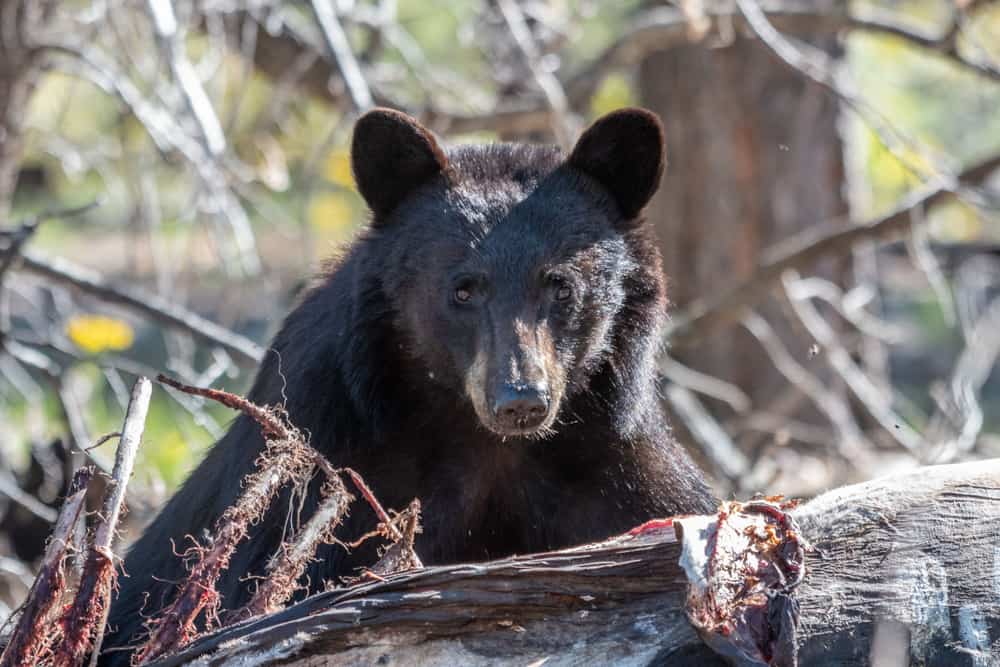
Black bears (Ursus americanus)
The American black bear lives exclusively in North America. They are also the most common bear in North America. Their range begins in Alaska and northern Canada and extends south into central Mexico. Today, there are black bear populations in 38 U.S. states, 11 Canadian provinces, and 7 Mexican states. See
In Utah, black bears live in the majority of the state’s forested habitat, except for in the Deep Creek Mountains, the Henry Mountains, the Raft River Mountains, and the Pilot Range. See
The current black bear population in the state of Utah is roughly 4,000 bears.
What do black bears look like?
Adult black bears are anywhere from 50 to 85 inches long from the tip of the nose to the tip of the tail. Their average height is around 30 inches at the shoulder. The normal black bear’s weight range is from 140 to 400 pounds. However, males can be up to 70% larger than females. Standing on its hind legs, a large male black bear can be over seven feet tall. What’s more, some giant-sized individuals weigh over 800 pounds.
Even though they are named black bears, their colors can vary from black, blue-grey, cinnamon, brown, blue-black, and on infrequent occasions, a black bear can even be white. Although most New Mexico bears are black, a small percentage of them are brown, cinnamon, or dark blond. Some black bears have a V-shaped white patch on their chest.
Other features that black bears have are long brown snouts, short tails, and small brown eyes, although their eyes are blue at birth.
Black bears lack the shoulder hump that brown bears or grizzly bears have. In areas that both species inhabit, the hump, or the lack thereof, is a distinguishing feature. Any wild bear in Utah will be a black bear, though.
Black bears are crepuscular animals. This means that their most active times of day are dusk and dawn.
How dangerous are black bears?
The knee-jerk response to that question is that black bears are timid, cautious animals; they’re more afraid of you than you are of them. All that is true most of the time. However, that’s only most of the time.
On June 17th, 2007, a black bear drug an 11-year-old boy from a tent near the Timpooneke Campground in Utah’s American Fork Canyon and mauled him to death. See
The following is from the Krebs Creek article titled Are Black Bears Dangerous to Humans?
“Black bears are not aggressive generally. They’re omnivores, which means their diet includes plant material but also meat. At times, black bears’ diets have been documented to consist of 96% plant material. This makes them one of the least predacious of all carnivores. However unaggressive they might be most of the time, black bears are still dangerous. In fact, at least one person is killed somewhere in North America each year by a black bear.
From 2001 through 2021, Black Bears killed twenty-eight people in North America. That’s a fact that flies in the face of the other points we know about these animals.
According to Doctor Stephan Herrero in his book “Bear Attacks, Their Causes and Avoidance,” from 1900 through 1980, 90% of the fatal attacks by black bears on humans in the United States and Canada were carried out by a predatory animal. In other words, 90% of the time, when black bears attack people, it’s because they view them as a food source.” When predatory black bear attacks happen, it’s usually in the late summer or early fall. This is when bears enter a hyperphagic state.
I’ll leave off there; if you want to read the rest of the article, you can click on the link.
The point is not to scare the reader. Black bear attacks are very rare. However, we’re dealing with unpredictable wild animals that have the ability to kill you with very little effort if that’s what they decide to do, and in rare circumstances, that’s exactly what they decide to do. Take that into consideration before you feed one.
“90% of the time, when black bears attack people, it’s because they view them as a food source.”Dr. Stephan Herrero “Bear Attacks, Their Causes and Avoidance,”
To see how to handle the situation if you encounter a bear in the wild, and how to set up your camp in bear country look at Camping in Bear Country
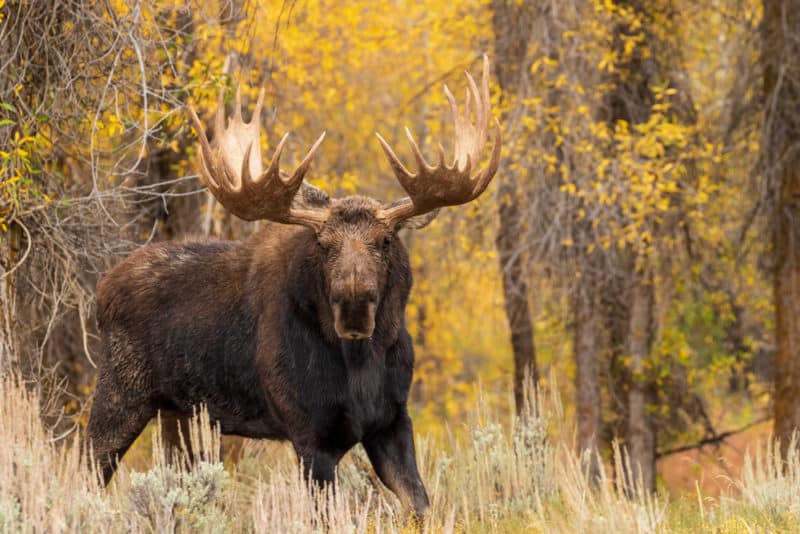
Moose (Alces alces)
Every year, moose are responsible for more attacks than any other North American wildlife species. In fact, Alaskan moose attack humans more than all the state’s large predators, which are black bears, grizzly bears, brown bears, polar bears, and wolves combined. See
Here is one example of a moose attack just outside of Salt Lake City, Utah.
According to Utah Division of Wildlife Resources spokesman Mark Hadley “Typically, moose cows are more aggressive than normal when trying to protect a calf, and bull moose, which “can be a bit ornery” under normal circumstances, are especially aggressive during breeding season, which is from late September to mid-October.” See
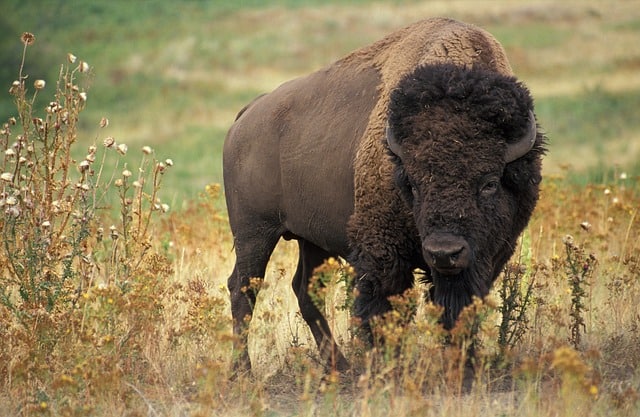
American Bison (Bison bison)
Utah is home to 3 free-ranging herds of bison or, as most Americans call them, buffalo. These are located in the Henry Mountains, on Ute Tribe, on State and Federal land in the Book Cliff Mountains, and on Antelope Island in the Great Salt Lake.
The buffalo in the Henrys and the Book cliffs are hunted, so they’re not as tame as the ones on Antelope Island and, therefore, not as great a threat to humans.
On the other hand, the buffalo on Antelope Island don’t necessarily run away when they see a person coming. The problem then lies with people who don’t keep a safe distance from these animals. The same thing happens at least a couple of times each tourist season in Yellowstone National Park.
Bison that seem to be placid lumbering animals that are paying you no attention snap, and in a split second, they’re smashing, stomping, and goring you because you entered their bubble.
These animals are extremely powerful and athletic and are capable of doing tremendous damage to the human body.
Between 2014 and 2020, there were four bison attacks on people on Antelope Island. This includes a 55-year-old trail runner who died from his injuries.
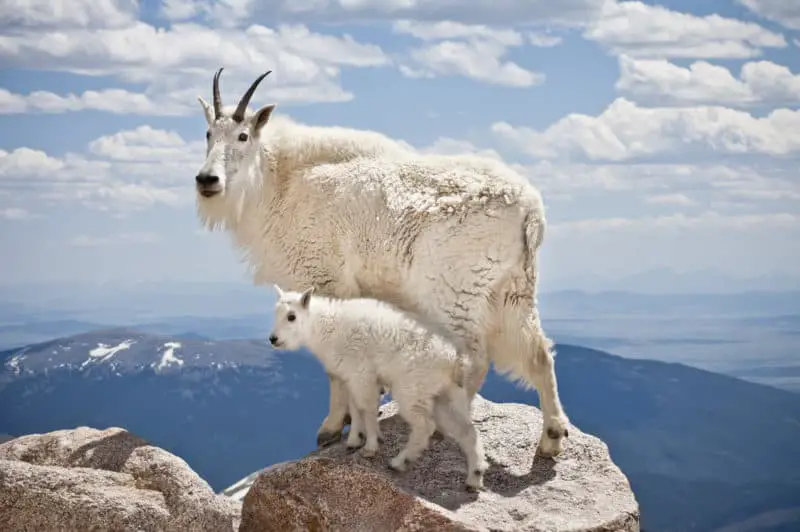
Rocky Mountain goats ( Oreamnos americanus)
Rocky mountain goats are not native to Utah. However, they are an introduced species to the Wasatch and Uinta Mountains of Utah.
Mountain goats may look and act peaceful, but they become fierce when they feel threatened. There is at least one account of a mountain goat killing a grizzly bear with its horns. There’s also one account of a mountain goat goring a hiker to death. See, No matter how accustomed people and mountain goats might become to each other; they’re still wild animals, so keep your distance. See
Dangerous Reptiles in Utah
Rattlesnakes
Utah is home to 6 different species of rattlesnake.
According to the U.S. Food and Drug Administration website, there are around 8,000 people bitten by venomous snakes in the United States each year. Most of these are rattlesnake bites. Out of these roughly 8,000 snake bites, 10 to 15 0f them are fatal. See
The reason rattlesnake bites and venomous snake bites, in general, aren’t highly fatal percentage-wise in the U.S. is because of the wide availability of medical care. If you are bitten by a rattlesnake, seek immediate medical attention. It’s your best chance for a positive outcome.
Utah’s 6 rattlesnake species are the following.

1-Mojave Rattlesnakes:
Mojave Rattlesnakes live in southwestern Utah. They are usually brown, olive-green, dark green, and even tan-looking in color and have a diamond-like pattern that ranges throughout their bodies. An adult Mojave rattlesnake can grow anywhere from two to four feet in length. Their tails have white and black bands on them. These rattlesnakes’ preferences are usually high desert (500 – 5,000 ft. elevation) and lower mountain slopes. They like desert flats instead of an area that has high volumes of vegetation or rocky areas.
The Mojave rattlesnake’s venom is neurotoxic. “A bite from a Mojave Green can cause a lot of local swelling, bruising, and even tissue damage, but what it’s notorious for is it can actually cause paralysis and even cause you to stop breathing.” Source

2-Speckled Rattlesnakes:
Speckled Rattlesnakes also live in Southwestern Utah. They live in different habitats from the Mojave, though. Instead of preferring desert flats, this rattlesnake species prefers areas with rocky terrain and some vegetation, such as desert shrubs. These rattlesnakes vary a bit in color. They can be cream, tan, grey, bluish-grey, orange, or yellowish-pink. Their bodies look speckled due to the pattern of their scales. This species of rattlesnake has hemotoxic venom.
Possible effects of Speckled Rattlesnake venom could include the following.
- Pain in the effected area
- Localized swelling
- Nausea and vomiting
- Impairment of blood coagulation
- Shock
- Mild paralysis Source.
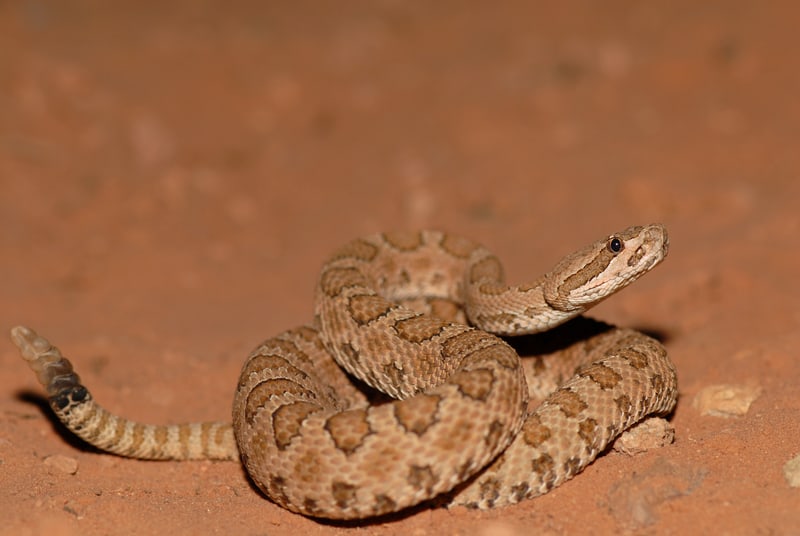
3-Midget-Faded Rattlesnakes:
Midget-faded rattlesnakes are cream, brownish-grey, or a straw-like color. They are found in eastern Utah, mainly in the Colorado Plateau. This species is actually a subspecies of the western rattlesnake. They can grow to 20-30 inches in length. Males are usually longer and bigger than females. Rocky areas that have many places to hide are a normal habitat for the midget-faded rattlesnake. This species bite can inject you with neurotoxic venom.
A Midget-faded Rattlesnake bite’s signs and symptoms include extreme pain, blistering, swelling, nausea, and vomiting. The venom can impair blood coagulation and break down the red blood cells, leading to tissue necrosis, shock, and rarely multiple organ damage. Source
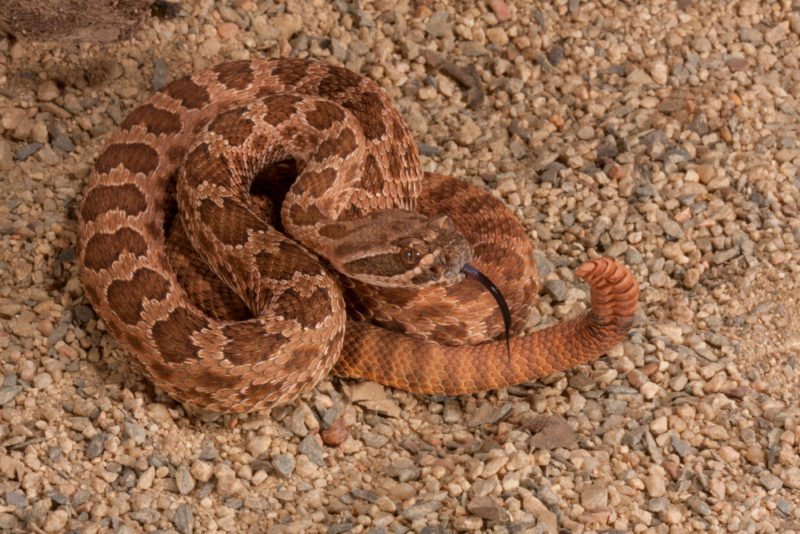
4-Hopi Rattlesnakes:
Another rattlesnake species found in the south-eastern regions of Utah is the Hopi rattlesnake. They usually do not exceed more than two feet and are normally reddish-pink with darker blotches throughout their bodies. Hopi rattlesnakes are mostly ground snakes, but they occasionally climb into shrubs, bushes, or trees.
These snakes are a smaller subspecies of the Prairie Rattlesnake. Their venom is both hemotoxic and neurotoxic.
The effects of a bite from a Hopi Rattlesnake may include any or all of the following.
- Intense pain
- Shock
- Swelling and blistering
- Nausea and vomiting
- Impairment of blood coagulation
- Break down of red blood cells
- Necrosis of tissue
- Damage of internal organs Source
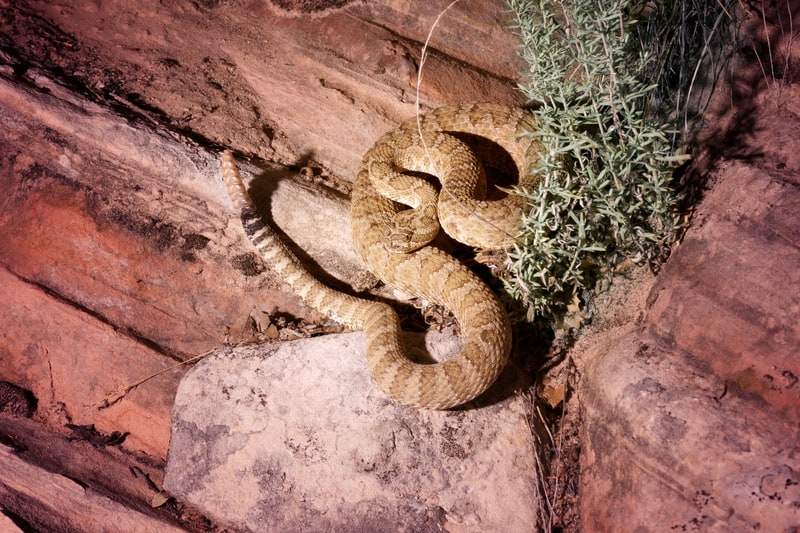
5-Great Basin Rattlesnakes
The Great Basin Rattlesnake inhabits parts of western Utah. They’re a subspecies of the western rattlesnake. These snake species are light grey or brown in color and have tapering brown blotches throughout their bodies. Great basin rattlesnakes have a variety of habitats they can live and survive in. These include juniper forests, sage-low banks, and rocky outcrops. These rattlesnakes grow from three to four feet in length. Their bite contains a mixture of neurotoxic and hemotoxic venom.
The consequences of severe envenomation from a Great Basin Rattlesnake bite may include any or all of the following.
- Depleted heart function due to hyperkalemic cardiotoxicity
- Severe internal bleeding
- Deep tissue and muscle damage
- Bacterial infections and gangrene
- In rare cases, compartment syndrome may occur in the effected area.
- Loss of function in the effected limb
- Rhabdomyolysis, which if not immediately treated, can lead to kidney failure
- Flaccid paralysis
- Severe shock
- Seizures
- Coma
- Multiple organ failure Source
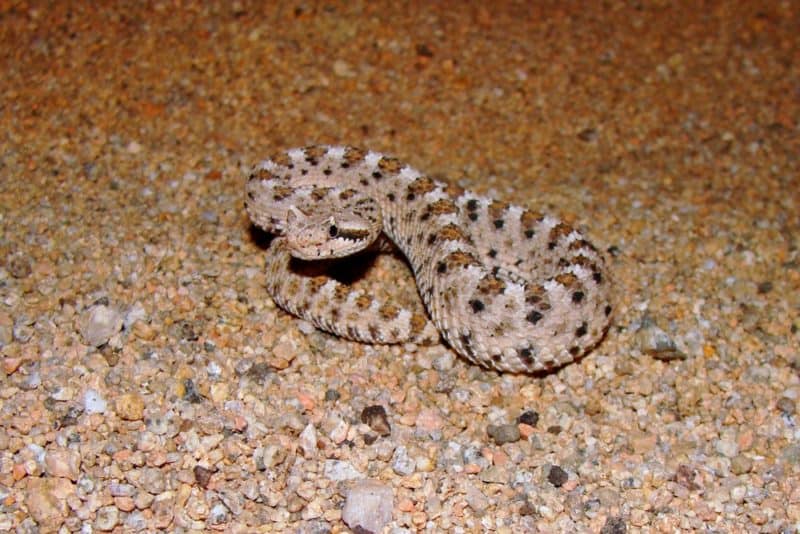
6-Mojave Desert Sidewinder
The Mojave Desert Sidewinder Rattlesnake is a venomous pit viper species found in the southwestern United States and northwestern Mexico regions. In Utah, they are found in the extreme southwestern corner of the state.
The sidewinder can reach speeds of up to 18 mph. The adult snake measures 17 to 31 inches in length, with the female being the largest. Their color pattern varies from cream, buff, yellowish-brown, pink, or ash gray, overlaid with 28-47 dorsal blotches, the belly is white, and the adult’s proximal lobe’s rattle is brown. They have the ability to change their coloration depending on the temperature through a process which is known as metachrosis.
The Sidewinder Rattlesnake is venomous, but its venom is weaker than other rattlesnakes. They also have smaller-sized venom glands making them less dangerous than their larger relatives. You should still be wary around them because any rattlesnake bite can be fatal, and medical attention should be sought immediately if bitten.
Most of the time, SideWinder rattlesnakes do not inject enough venom with their bites to create severe complications. However, in a case where the victim has been bitten and envenomated multiple times with delayed treatment, the following complications could occur.
- Internal bleeding
- Deep tissue and muscle damage to the affected limb may lead to bacterial infections and gangrene.
- Loss of use of the affected limb
- Severe shock
- Paralysis
- Seizures
- Coma
- Multiple organ failure source
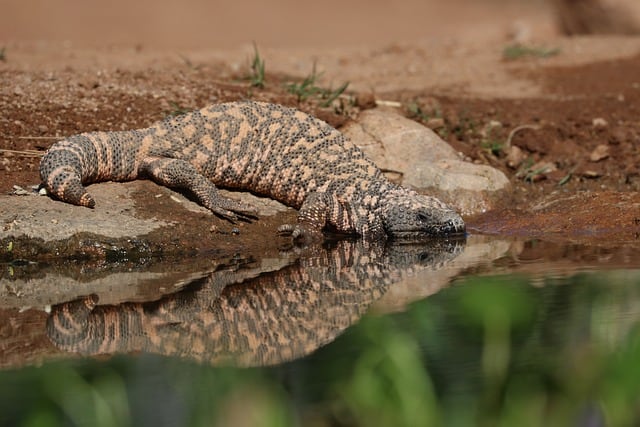
The Gila Monster (Heloderma suspectum)
The Gila Monster is one of only a handful of venomous lizards that exist in the world. The other example of a venomous lizard living on the North American continent is the Mexican Beaded Lizard.
Gila Monsters don’t have fangs to inject their venom as venomous snakes do. Instead, they have poison glands that are located in their lower jaw. They envenomate their target by chewing and letting the venom flow through their grooved teeth into the wound.
Gila Monster venom is about as toxic as that of the Western Diamondback Rattlesnake. However, the amount of venom they inject is relatively small, so bites are rarely life-threatening. See
Since they introduce their venom through chewing action, it may be difficult to get a Gila Monster to let go once it has a grip on you. You might try slapping it on the nose or prying its jaws open with a stick.
Once you’ve pried the Gila Monster loose from your flesh, you’ll need to seek medical attention.
According to the Utah Division of Wildlife Resources, if your intent is to see a Gila monster in the state, remember they are desert animals. The best place to look is in southern Utah, in Washington county.
Even when you’re looking in the right area, it will still be difficult to find a Gila monster. They are mostly nocturnal. Consequently, they spend a lot of time underground during the day.
Dangerous Arachnids in Utah
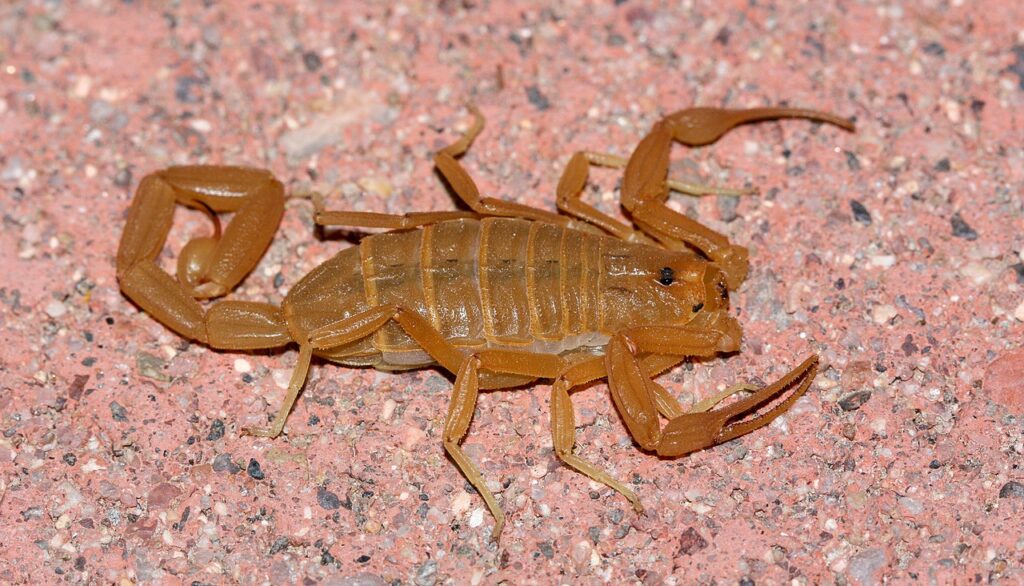
Arizona Bark Scorpion
The Arizona Bark Scorpion, whose scientific name is Centruroides sculptures, is quite small, with a maximum length of 2 1/2 inches. They are tan in color, with their back being slightly darker than the rest of their bodies. Another identifying characteristic is that bark scorpions, in general, are the only type of scorpion that hold their tails curled to the side when they’re at rest. Additionally, they are the only species of scorpion in Utah with the ability to climb rough surfaces. Consequently, they climb trees, walls, and other vertical objects as long as the surface has some texture to it. These scorpions tend to hide in the cracks of rocks, beneath tree bark, and in leaf litter.
Arizona bark scorpions closely resemble and are closely related to the Baja California Bark Scorpion Centruroides exilicauda. However, the sting of an Arizona Bark Scorpion is much more dangerous.
They are the most venomous species of scorpion in North America. The list of effects caused by an Arizona bark scorpion sting may last up to 72 hours. They include will include all or some of the following
- significant pain
- numbness
- tingling, shortness of breath
- temporary loss of function and or convulsions in the affected limb
- vomiting
- In rare extreme cases, death
Since records have been kept, two people in the state of Arizona have died from the effects of Arizona bark scorpion stings. Arizona bark scorpion stings are particularly dangerous to young children and the elderly.
From Medical News Today, if an individual experiences any of the following symptoms after a scorpion sting, they should seek immediate medical attention.
- muscle jerking or spasms
- difficulty swallowing
- drooling
- leg weakness
- unconsciousness
- difficulty breathing
- swelling or hives over the body
There is an FDA-approved antivenom for bark scorpion stings called Anascorp. Most of the hospitals that have Anascorp on hand are in Arizona. However, there are a few hospitals in southern Utah and Nevada that have it on hand as well.
Arizona Bark Scorpions are native to the southwestern United States. As the name suggests, primarily live in Arizona and the Sonoran Desert of Mexico. They also live in California, Nevada, New Mexico, and southern Utah.
In the state of Utah, Arizona Bark Scorpions have limited distribution. They primarily live in Kane County. However, they are increasingly being found in the St. George area. It is thought that they are being brought in with the palm trees that are used for landscaping. Source
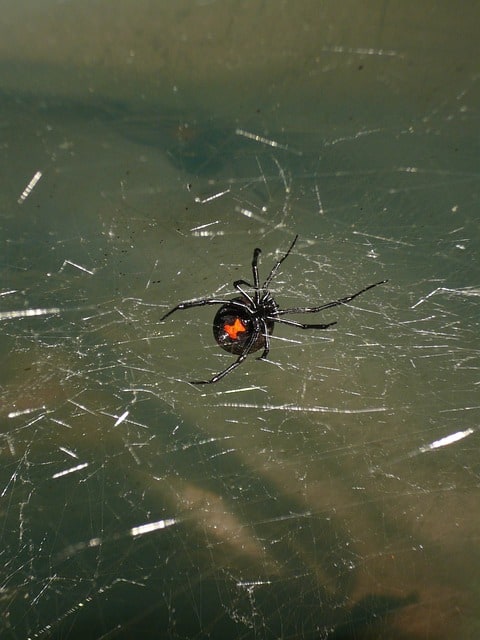
The Black Widow Spider (Latrodectus hesperus)
Utah also has the Western Black Widow Spider. The average body length of a mature Western Black Widow Spider is around 1/2 an inch. Their legs spread out 1 1/2 to 2 inches. Males are around 1/3 the size of females. The female’s body is shiny black with what is generally a red hourglass shape on the bottom of the abdomen. However, the hourglass can also be yellow or white in color.
Black widows have neurotoxic venom that affects the nervous system of bite victims. Their bite is dangerous, particularly to young children and the elderly. However, a black widow bite is rarely fatal.
There is an antivenom available for black widow bites. However, physicians only use it in rarely serious cases.
Black widow spiders are common throughout Utah. They prefer dark spaces such as in the crevasses in woodpiles, in empty flowerpots, in crawl spaces, and in outbuildings.
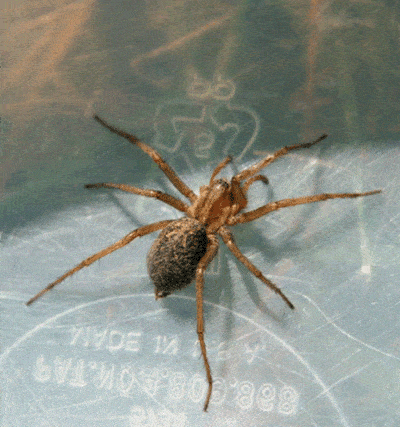
Hobo Spider (Tegenaria agrestis)
According to the Utah State University extension website, “Hobo spiders are one of the most common indoor spiders found in northern Utah. It is currently undetermined if their bite causes necrotic lesions in humans.”

Yellow Sac Spider (Cheiracanthium inclusum)
The information from Utah State University is as follows. “The yellow sac spider is a common household spider in Utah. It can be seen walking on walls and ceilings. During the day, it forms a small white silken retreat where the ceiling and walls meet, or in corners. The venom is not dangerous to humans, however, the bite can be painful. Yellow sac spiders are more aggressive than most other house spiders and may bite multiple times if trapped inside clothes or mishandled.“
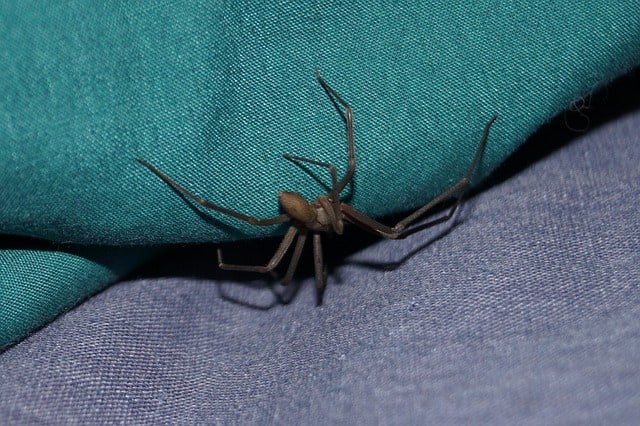
The Brown Recluse Spider (Loxosceles reclusa)
Brown Recluse Spiders are usually between 1/4 and 3/4 inches in diameter, with their legs extended. However, there are specimens that grow larger. While they’re typically light to medium brown, they range in color from whitish to dark brown or blackish gray. They generally have a contrastingly dark-colored violin-shaped marking on the top of their cephalothorax, with the neck of the violin pointing to the rear of the spider. This is why they also have the nickname fiddleback spider.
Brown Recluse Spiders have necrotic venom, which can destroy human skin and soft tissue. In extreme cases, bite victims develop a necrotizing ulcer at the sight of the bite that may take months to heal as dead tissue needs to slough away before it can do so. Brown Recluse Bites can also cause death in very rare instances. Most deaths occur in small children or those with a compromised immune system. See
Brown Recluse Spiders don’t have an aggressive nature. They rarely bite human beings. However, when bites do occur, it is usually a case of a person accidentally pressing one up against the skin inside of a glove or article of clothing.
More good news for people in Utah is that Brown Recluse spiders do not live in the state.
However, the reason that I have included them in this article is that they can potentially hitch a ride here with random stuff from out of state. I live in Utah, and a woman here in the community I live in was bitten on the thigh by a brown recluse. She developed a necrotic lesion that eventually reached her femur.
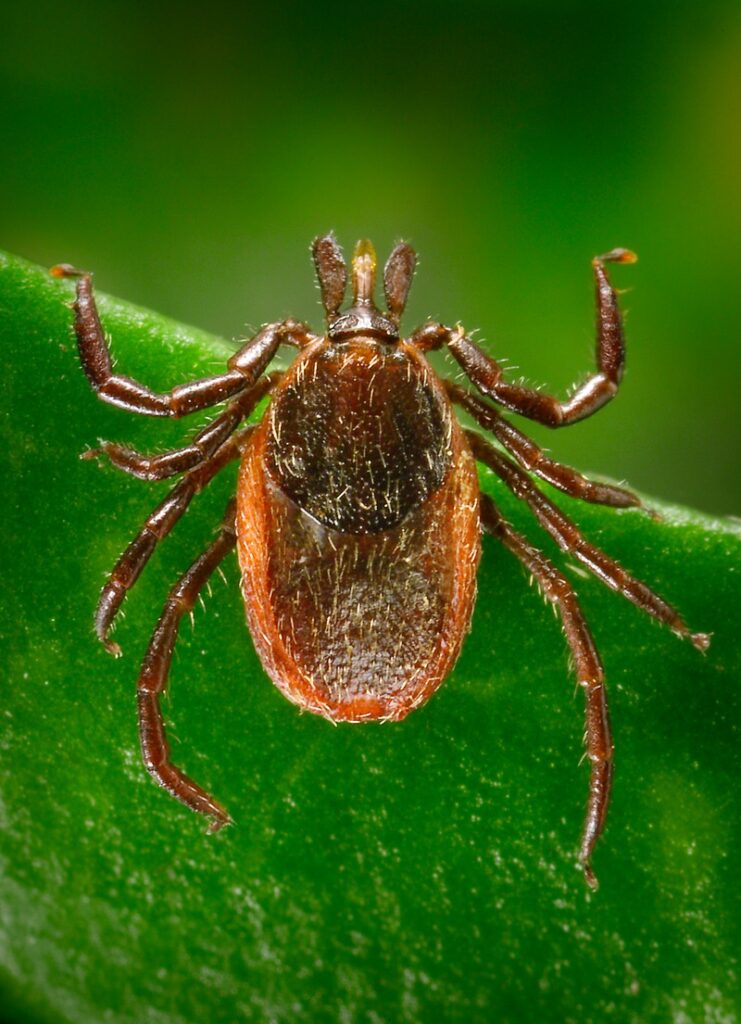
Ticks
There are 6 different species of tick in Utah that carry 5 different severe Illnesses. Some of these illnesses are potentially deadly without prompt medical treatment.
I copied the chart below from the Utah State University Utah Pests Fact Sheet. I have also supplied the link to the complete PDF article.
From the Utah Pests Facts Sheet
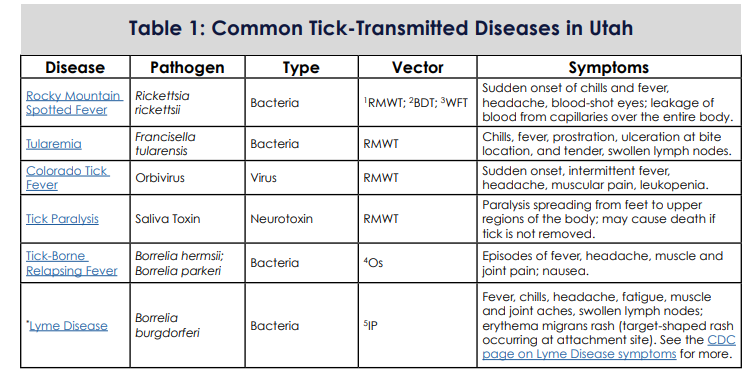
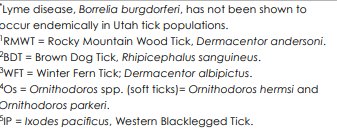
The tick-borne illness that is of particular concern is Lyme disease. Utah has the Western Black Legged Tick, which carries Lyme disease. However, even though the state of Utah averages around 27 new cases of Lyme Disease per year, it is believed that the majority of these cases are contracted outside the state of Utah.
To date, no survey has detected the bacteria that causes Lyme Disease in Utah’s Western Black Legged Ticks. The most recent survey was completed by researchers from Utah State University in 2015. In this study, ticks were collected over a 3-year period from 160 sites in northern and southern Utah. The survey found that Western Black Legged Ticks are rare in Utah. The majority of the 119 specimens that they found came from the Sheeprock Mountains in Toole County. The survey also failed to find Lyme Disease in any of the specimens collected. See
I’ll add here that while repellents that are effective against insects repel ticks to some degree, they are not as effective as they would be against mosquitos, for instance.
The two repellents that seem to offer the greatest protection against ticks are DEET and picaridin.
Dangerous Insects in Utah
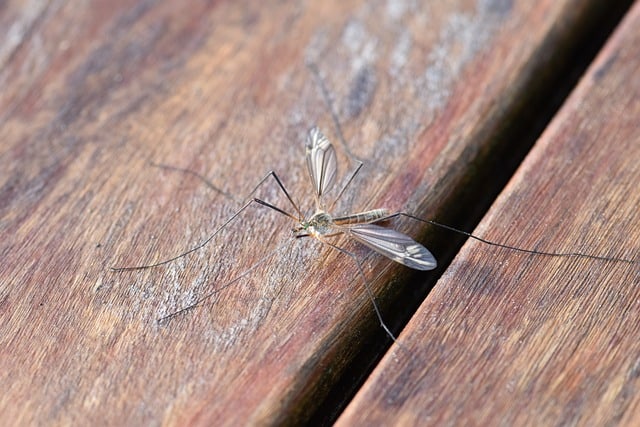
Mosquitoes
In terms of the total human fatalities caused by a single organism, mosquitos are by far the deadliest animals in the world. Mosquito bites spread bacteria, viruses, and parasites that cause between 725,000 and 1,000,000 human fatalities annually. See
In the time period of 2010 through 2020, the West Nile Virus sickened 22,647 people, of which 1247 of them died.
In Utah, both the Common House Mosquito (Culex pipiens) and Western Encephalitis Mosquito (Culex tarsalis) carry West Nile Virus.
According to the Centers for Disease Control and Prevention, the best thing to reduce the risk of West Nile Virus in Utah is to wear long sleeves and long pants during peak mosquito season and use an insect repellent that is high in one of the following: See
- DEET
- Picaridin (known as KBR 3023 and icaridin outside the US)
- IR3535
- Oil of lemon eucalyptus (OLE)
- Para-menthane-diol (PMD)
- 2-undecanone
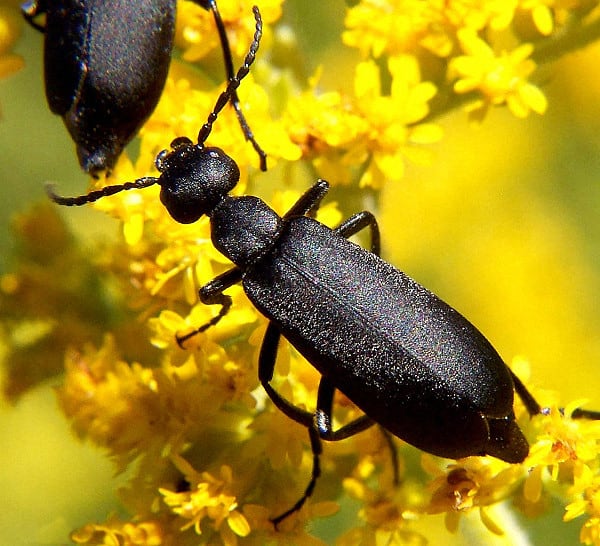
Blister Beetle
Blister Beetles belong to the family Meloidae. They produce a chemical called cantharidin which is toxic to humans and animals. If you accidentally smash one of these critters against your skin, it will cause blistering and swelling. However, these blisters are usually not life-threatening.
The biggest threat blister beetles pose is to livestock. They are drawn to alfalfa hay. As little as 4 to 6 grams of crushed blister beetle is enough to kill a horse.
Recent Posts
The only venomous snakes in Washington State are Northern Pacific Rattlesnakes. The Northern Pacific Rattlesnake (Crotalus oreganus oreganus) is a sub-species of the Western Rattlesnake. Anyone...
Skunks are not classified as true hibernators. But they go into a state of torpor when the weather gets cold. Skunks are light sleep hibernators, along with opossums, bears, and raccoons. ...
